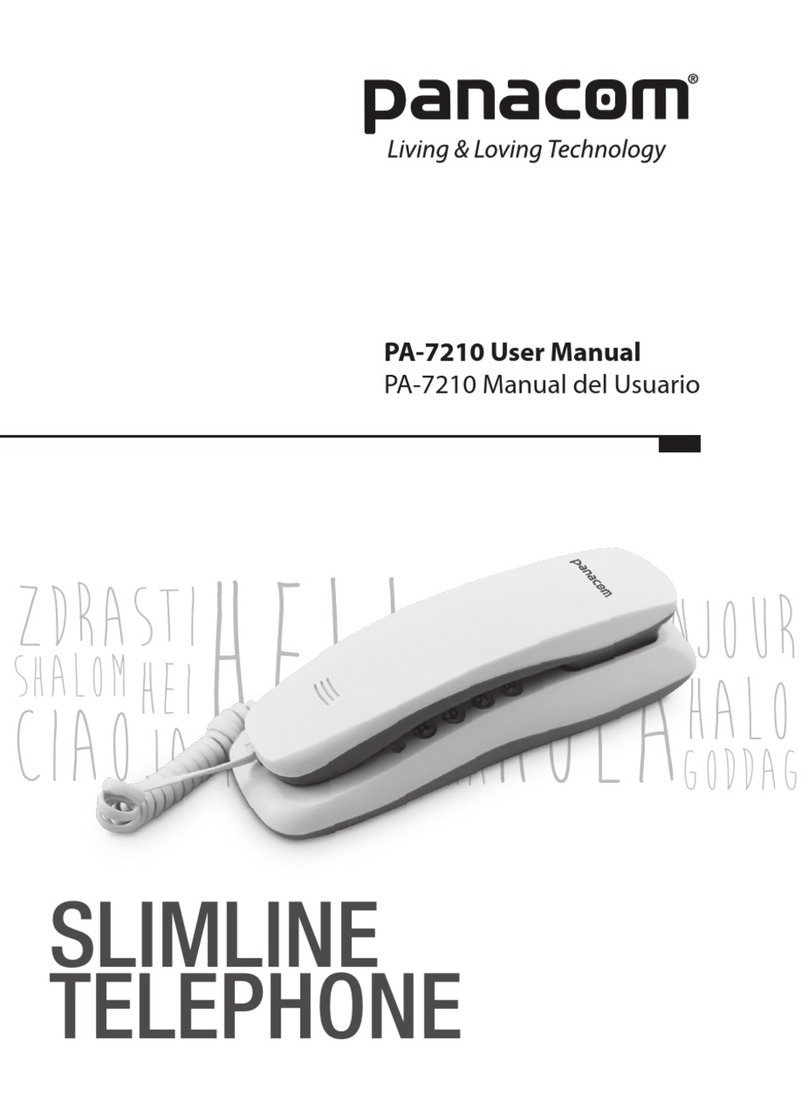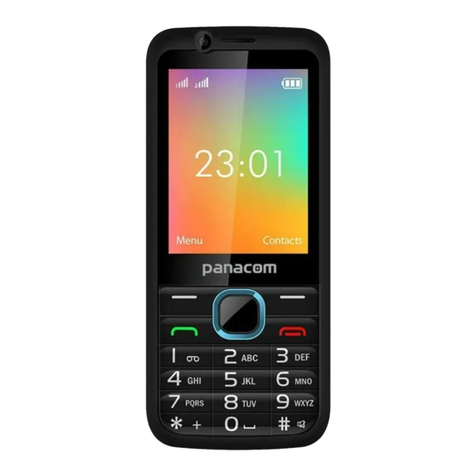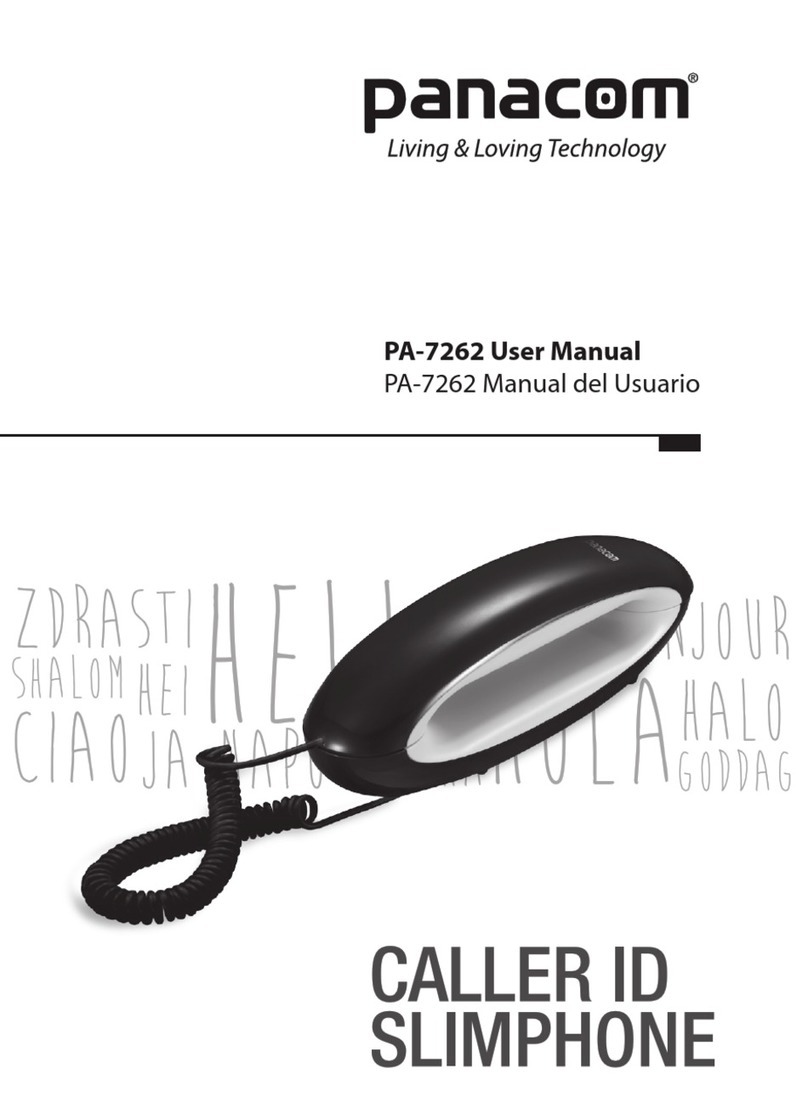
Pg. 10
2. Press the line number button next to ashing red indicator light to
answer that call.
If you want to hang up on the rst caller, just push the line button that
is ashing red to answer that line.
NOTE: You always need to put the rst caller on hold before answer-
ing a second call, or you will hang up on the rst caller.
SWITCHING BETWEEN SPEAKER AND HANDSET
You can switch between the speaker and the headset after dialing a
number or at any moment during a conversation.
• From speaker to handset, raise the headset.
• From handset to speaker, press SPEAKER; then hang up the handset.
ADJUSTING HANDSET AND SPEAKER VOLUMES
The volume controls for the handset and speaker are separate, so you
can adjust one without affecting the other. Use the VOLUME arrows at
the bottom of the keypad to adjust the handset volume while using the
handset, or the speaker volume while using the speakerphone.
TIP: To return to the default volume settings, press both volume ar-
rows at the same time.
USING THE FEATURES
This section discusses all of the basic telephone features.
REDIAL
Redial the last number you called by pressing the REDIAL button
after you get a dial tone.
NOTE: The Redial feature holds in memory the last numbers that you
pressed. If you pressed any numbers after dialing the phone number
you last called (for example, when accessing a voice-menu system)
those numbers are dialed.
If you get a busy answer, you can press REDIAL once again without
hanging up to save some time while redialing the same number.
BUSY REDIAL
When calling you get busy signal, press the button BUSY REDIAL and
hung up the handset if you are using it. The phone will automatically
call every 30 seconds (up to 10 times) while you do other tasks.













































